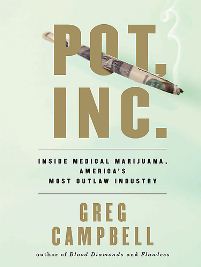 In Colorado, for-profit medical marijuana vendors are moving ever closer to legal legitimacy, perhaps wedging open the door toward full-scale corporate participation in the industry.
In Colorado, for-profit medical marijuana vendors are moving ever closer to legal legitimacy, perhaps wedging open the door toward full-scale corporate participation in the industry.
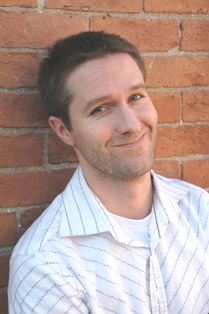 Greg CampbellAlthough Colorado enacted its medical marijuana law in 2000, it wasn't until 2009 that the industry took off, reports Greg Campbell, author of Pot Inc. The springboard for that was the Obama administration's announcement that it would not actively prosecute medicinal growers or distributors. Three years later, the boom times have come under an uneasy shadow, as the federal justice department has moved away from its former "look the other way" stance and begun more aggressive prosecutions of high profile California operations such as Oakland's Oaksterdam and Harborside Health in San Jose.
Greg CampbellAlthough Colorado enacted its medical marijuana law in 2000, it wasn't until 2009 that the industry took off, reports Greg Campbell, author of Pot Inc. The springboard for that was the Obama administration's announcement that it would not actively prosecute medicinal growers or distributors. Three years later, the boom times have come under an uneasy shadow, as the federal justice department has moved away from its former "look the other way" stance and begun more aggressive prosecutions of high profile California operations such as Oakland's Oaksterdam and Harborside Health in San Jose.
 As in California, retail sellers of indoor growing equipment and supplies have proliferated in Colorado. But Campbell says there is another segment of the local economy that has bloomed even more dramatically.
As in California, retail sellers of indoor growing equipment and supplies have proliferated in Colorado. But Campbell says there is another segment of the local economy that has bloomed even more dramatically.
In reporting on the medical marijuana industry in his home state of Colorado, Campbell plunged into the issue first-hand, initially, he says, by seeking his own official patient card.
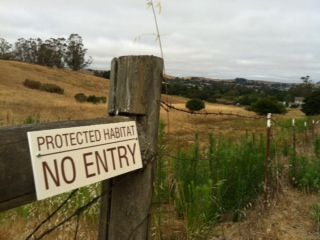
Badgers are important predators, hunting rats, moles, gophers and California ground squirrels. Their burrows (see below) also provide homes for other animals such as the California tiger salamander, red-legged frogs, burrowing owls and foxes. However their habitat, generally hilly grasslands, has been dramatically impacted by development and their populations are declining.
 Possibly because of their rare and elusive nature, badgers aren’t often in the public mind. The political will to protect them is thin to nonexistent, says Susan Kirks of the Paula Lane Action Network. The new preserve in Petaluma will, Kirks hopes, help school kids and the public learn to love their hardy, little-seen neighbors.
Possibly because of their rare and elusive nature, badgers aren’t often in the public mind. The political will to protect them is thin to nonexistent, says Susan Kirks of the Paula Lane Action Network. The new preserve in Petaluma will, Kirks hopes, help school kids and the public learn to love their hardy, little-seen neighbors.
Images: 1) Danielle Venton for KRCB; 2) Courtesy of Andy LaCasse, taken near Skillman Lane in Petaluma.
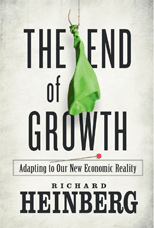 Climate change, mounting consumer and government debt, and the coming scarcity of cheap fossil fuels. Together, says one local analyst, they spell an end to surging economic growth.
Climate change, mounting consumer and government debt, and the coming scarcity of cheap fossil fuels. Together, says one local analyst, they spell an end to surging economic growth.
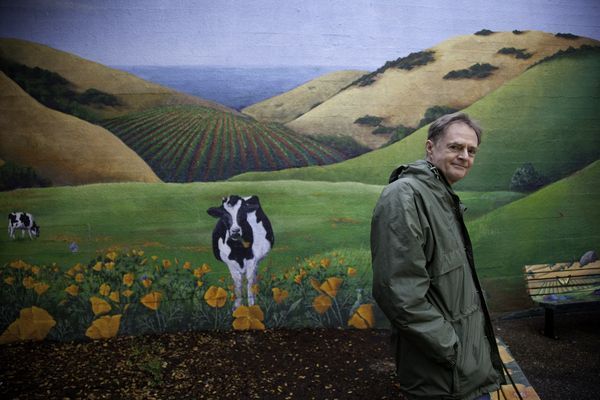 Some forecasters believe that China may emerge as the next driver of international economic expansion. But Richard Heinberg, the Santa Rosa analyst and author of The End of Growth, cautions that their recent growth is no more sustainable than that of the industrialized west.
Some forecasters believe that China may emerge as the next driver of international economic expansion. But Richard Heinberg, the Santa Rosa analyst and author of The End of Growth, cautions that their recent growth is no more sustainable than that of the industrialized west.
But Heinberg predicts that hard times are heading for the European Union even sooner.
The sort of sweeping societal and attitudinal changes that Bhutan is demonstrating may seem impossibly idealistic. But Heinberg believes the stakes are high enough to justify pursing it.
 California's Death Row inmates are getting older and more numerous, but they are not getting executed. A proposed change in state law, on the ballot this fall, would eliminate capital punishment altogether.
California's Death Row inmates are getting older and more numerous, but they are not getting executed. A proposed change in state law, on the ballot this fall, would eliminate capital punishment altogether.
 Jeanne WoodfordEconomic considerations are far from the only consideration that voters should use in reconsidering the death penalty, says Jeanne Woodford, the former head Warden at San Quentin and Director of the California Department of Corrections. But she believes they do make a strong case for change.
Jeanne WoodfordEconomic considerations are far from the only consideration that voters should use in reconsidering the death penalty, says Jeanne Woodford, the former head Warden at San Quentin and Director of the California Department of Corrections. But she believes they do make a strong case for change.
 Woodford spent 26 years on the staff at San Quentin, eventually working her way up to become Director of California's Department of Corrections. She says her direct experience with death penalty in those jobs only reinforced her opposition to it.
Woodford spent 26 years on the staff at San Quentin, eventually working her way up to become Director of California's Department of Corrections. She says her direct experience with death penalty in those jobs only reinforced her opposition to it.
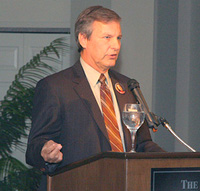 Marc KlaasMarc Klaas, founder of the KlaasKids Foundation and the non-profit, Beyond Missing, is a staunch backer of capital punishment. It's not working very well in California right now, but with a few adjustments in the way those cases are handled, Klaas says the death penalty could be made effective again.
Marc KlaasMarc Klaas, founder of the KlaasKids Foundation and the non-profit, Beyond Missing, is a staunch backer of capital punishment. It's not working very well in California right now, but with a few adjustments in the way those cases are handled, Klaas says the death penalty could be made effective again.

 Elaine LeederSonoma State University Dean Elaine Leeder is well aware that the self-improvement class she offers for inmates at San Quentin State Prison could draw some measure of participation for less than noble motives. But for the most part, she doesn't think so.
Elaine LeederSonoma State University Dean Elaine Leeder is well aware that the self-improvement class she offers for inmates at San Quentin State Prison could draw some measure of participation for less than noble motives. But for the most part, she doesn't think so.
Most students come to her class with a genuine desire for change, says Leeder, and the results can sometimes be seen within the prison itself.

 Live Radio
Live Radio